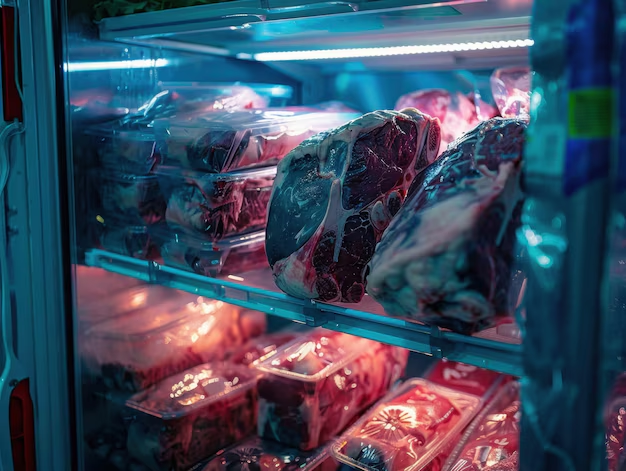How Long Can You Keep Fresh Meat in the Refrigerator? A Comprehensive Guide
When it comes to storing fresh meat, understanding how long it can safely remain in your refrigerator is crucial for both health and flavor. Whether you're planning a special dinner or just stocking up for the week, learning the ropes of meat storage can save you money and prevent foodborne illness. Let's explore the ins and outs of keeping fresh meat fresh, balanced with practical advice and insights.
🥩 The Basics of Fresh Meat Storage
Temperature Matters
The refrigerator is your first line of defense when it comes to keeping meat safe for consumption. Maintaining a stable temperature of 40°F (4°C) or below slows bacterial growth, ensuring that your meat stays fresh longer. A thermometer can help you verify your fridge's temperature is in the safe range.
Know Your Meat: Different Types, Different Lifespans
Each type of meat has a unique refrigerator lifespan. Here's a quick overview of how long you can store different meats safely:
- Poultry (including chicken and turkey): 1-2 days
- Ground meats (beef, pork, lamb, veal): 1-2 days
- Steaks and chops (beef, veal, lamb, pork): 3-5 days
- Roasts (beef, pork, lamb, veal): 3-5 days
- Fish and seafood: Best consumed within 1-2 days
Understanding Use-By Dates
Supermarkets provide use-by dates as a guide for freshness. They're helpful, but knowing safe storage times can empower you to make decisions based on meat condition rather than arbitrary dates. Proper handling before and after purchase significantly impacts how long meat stays fresh.
🥗 Factors Influencing Meat Freshness
Packaging: To Open or Not to Open?
Factory-sealed packaging often extends shelf life by limiting oxygen exposure. However, once opened, meat is more susceptible to spoilage and should be used rapidly. Consider portioning large packages into smaller, airtight containers to minimize exposure to air and bacteria once opened.
Placement in the Refrigerator
Store meat on the bottom shelf to prevent juices from dripping onto other foods. Keep it in a dedicated section, away from produce, to mitigate cross-contamination risks.
Proper Refrigeration Techniques
- Use airtight containers or plastic wrap to preserve moisture and prevent odors from other foods.
- Avoid overcrowding. Proper air circulation is necessary to maintain consistent cooling.
- Use meat or deli drawers designed to house meat products at optimal temperatures.
🍖 Identifying Spoiled Meat
Spoiled meat isn't just unpleasant—it's unsafe. Here’s how to identify meat that shouldn't be consumed:
Visual Clues
Fresh meat has a consistent and expected color: red for beef, pink for pork, and pale or pinkish for chicken. Any discoloration, including gray or greenish hues, indicates spoilage.
The Smell Test
Fresh meat has a mild odor. If your meat emits a foul or sour smell, it's best to dispose of it.
Texture Concerns
Spoiled meat may feel slippery or sticky. Any unexpected change in texture is a sign that your meat may have turned.
❄️ Transitioning from Refrigerator to Freezer
Deciding to Freeze
If your meal plans change, freezing is an excellent option to extend your meat's life. Most meats freeze well, but it's wise to do so before the recommended fridge storage time exceeds.
Proper Freezing Practices
- Use freezer-safe packaging to prevent freezer burn.
- Label packages with the date of freezing for easy reference.
- Keep the freezer temperature at 0°F (-18°C) or lower for optimal preservation.
Thawing Tips
Safe thawing involves transferring meat from the freezer to the fridge, allowing it to gradually defrost. This prevents bacterial growth. Never thaw meat at room temperature.
📝 Quick Reference Guide: Meat Storage 101
| Meat Type | Refrigerator (Days) | Freezer (Months) |
|---|---|---|
| Poultry | 1-2 | 9-12 |
| Ground Meat | 1-2 | 3-4 |
| Steaks & Chops | 3-5 | 4-12 |
| Roasts | 3-5 | 4-12 |
| Fish & Seafood | 1-2 | 3-6 |
🛡️ Protecting Against Foodborne Illness
The Role of Safe Handling
Practicing safe meat handling from market to preparation is crucial. Always wash your hands before and after handling meats, use separate cutting boards for meat and vegetables, and ensure meat is cooked to the right temperature.
Cooking Temperatures Matter
Use a thermometer to ensure that meat reaches safe internal temperatures:
- Poultry: 165°F (74°C)
- Ground meats: 160°F (71°C)
- Steaks and roasts: 145°F (63°C) followed by a 3-minute rest
✍️ Summary: Key Takeaways
- Keep your refrigerator at 40°F (4°C) or below to slow bacteria.
- Know the specific storage times for different meats to ensure freshness.
- Identify signs of spoilage through color, smell, and texture.
- Transition meats to the freezer if needed, ensuring proper packing and labeling.
- Always practice safe food handling to minimize illness risk.
In conclusion, the journey from fridge to fork involves understanding the unique needs of your meats. Through proper storage, handling, and cooking, you can ensure that every meal is both delicious and safe, unlocking the full potential of your fresh items while maintaining peace of mind. Bon appétit!
